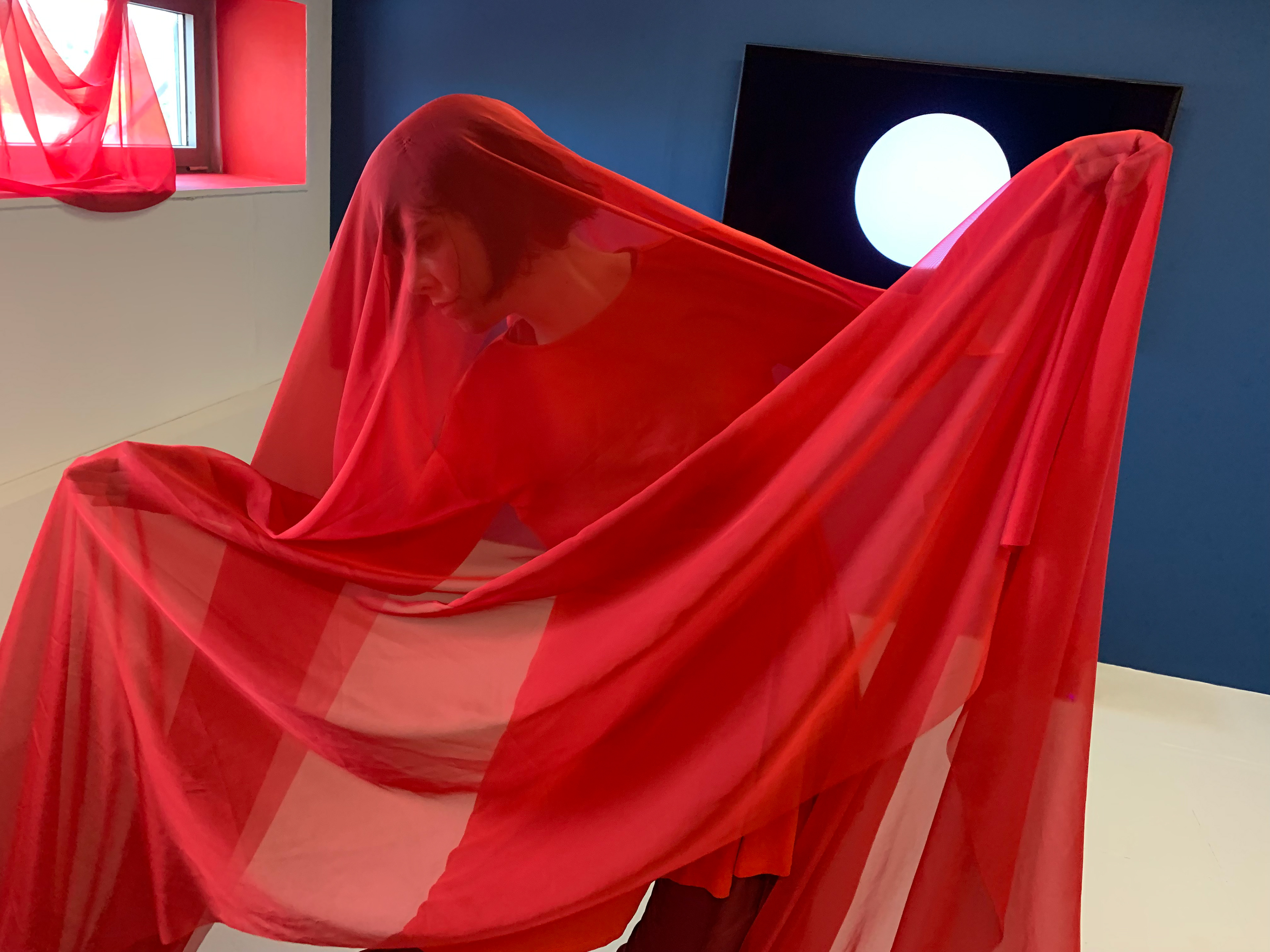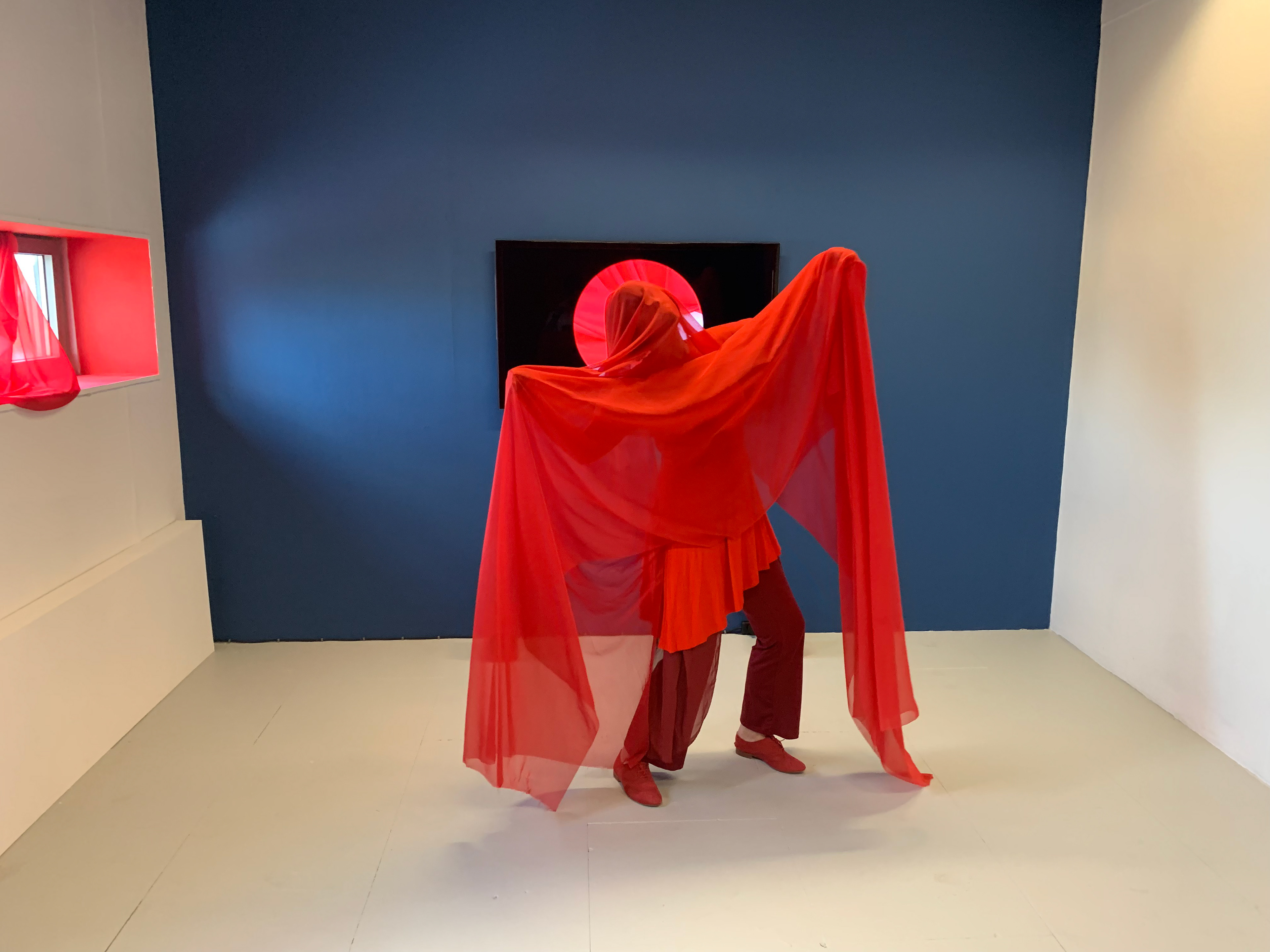Installation including mixed media on canvas, film, sound and performance, 2021
Performances, video editing and mixed media on canvas by: Annie Goliath
Performance and Sound Design: Black Astronaut
Narrator's Voice: Nkuli Hepburn Zikalala
Set in a future dystopia on the brink of ecological collapse, this installation imagines a world where there is a further erosion of gender equality and artificial intelligence dominates human experience. It poses urgent questions about consciousness and care: Did gender equality exist in the past and could it again in the future? Could artificial intelligence possess consciousness? Might consciousness extend beyond the brain?
In the second part of the science-fiction artist’s film forming the core of the installation, the ghost of Pandora dances among the ruins of the Palace of Knossos on Crete — once home to the ancient Minoan civilisation, often seen as a historical example of a partnership society. This vision draws on cultural historian Riane Eisler’s theory that early societies were based on equality, later displaced by the dominator model of civilisation — hierarchical, exploitative, and destructive.
Pandora’s Box explores the interconnections between consciousness, gender, and ecology, revealing the consequences of a world governed by domination rather than equality and reciprocity.
Notes:
The archival film referenced in Part 2 is the silent film Pandora’s Box (1929), directed by G. W. Pabst and starring Louise Brooks
The archival film referenced in Part 2 is the silent film Pandora’s Box (1929), directed by G. W. Pabst and starring Louise Brooks
Transmute, 2021
Mixed media on canvas, 140 x 120 cm
Transmute, 2021
Detail of mixed media on canvas, 140 x 120 cm
Pandora's Box, 2021
Installation shot 1
Pandora's Box, 2021
Installation shot 2
Detail of In-between Boundaries, 2021
Mixed media on canvas
Pandora, 2021
Artist's film
Pandora, 2021
Artist's film, 11 minutes, 45 seconds


Behind the Veil, 2021, Periodic Performance
In Part 4 of the artist’s film forming part of this installation, the character Pandora — commanded to be killed by the AI entity Blue_10010101 — sings words drawn from a collage of reported near-death experiences. These accounts, gathered from diverse times, places, and ages, reveal striking similarities in how people describe crossing the threshold between life and death.
Some of these testimonies include veridical perceptions later verified by witnesses, challenging the idea that such experiences are merely hallucinations of the dying brain. During the exhibition, Pandora’s live performances punctuated Part 4 of the film, merging voice, movement, and sound in a cyclical act of remembrance.
Drawing on the histories of drone, jazz, and experimental composition, the piece layers these influences into a haunting score. Pandora’s sung words echo a collective memory — an otherworldly consciousness that could potentially exist between, or perhaps beyond, the confines of linear time.